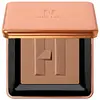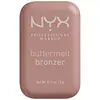What's inside
What's inside
 Key Ingredients
Key Ingredients

 Benefits
Benefits

 Concerns
Concerns

 Ingredients Side-by-side
Ingredients Side-by-side

Synthetic Fluorphlogopite
Calcium Sodium Borosilicate
Squalane
EmollientNeopentyl Glycol Dicaprylate/Dicaprate
EmollientHydrogenated Polyisobutene
EmollientMica
Cosmetic ColorantCaprylic/Capric Triglyceride
MaskingSorbitan Isostearate
EmulsifyingSodium Hyaluronate
HumectantPseudozyma Epicola/Sunflower Seed Oil Ferment Extract Filtrate
Emulsion StabilisingArnica Montana Flower Extract
MaskingTocopherol
AntioxidantAscorbyl Palmitate
AntioxidantTocopheryl Acetate
AntioxidantPersea Gratissima Oil
Skin ConditioningDimethicone
EmollientHydrogenated Rapeseed Oil
EmollientEthylhexylglycerin
Skin ConditioningEthylhexyl Palmitate
EmollientSilica
AbrasiveCaprylyl Glycol
EmollientTrihydroxystearin
Skin ConditioningPentaerythrityl Tetra-Di-T-Butyl Hydroxyhydrocinnamate
AntioxidantPolysorbate 60
EmulsifyingHydrogenated Styrene/Isoprene Copolymer
Ethylene/Propylene/Styrene Copolymer
Butylene/Ethylene/Styrene Copolymer
BHT
AntioxidantCI 77891
Cosmetic ColorantCI 77491
Cosmetic ColorantCI 77007
Cosmetic ColorantCI 19140
Cosmetic ColorantCI 15850
Cosmetic ColorantSynthetic Fluorphlogopite, Calcium Sodium Borosilicate, Squalane, Neopentyl Glycol Dicaprylate/Dicaprate, Hydrogenated Polyisobutene, Mica, Caprylic/Capric Triglyceride, Sorbitan Isostearate, Sodium Hyaluronate, Pseudozyma Epicola/Sunflower Seed Oil Ferment Extract Filtrate, Arnica Montana Flower Extract, Tocopherol, Ascorbyl Palmitate, Tocopheryl Acetate, Persea Gratissima Oil, Dimethicone, Hydrogenated Rapeseed Oil, Ethylhexylglycerin, Ethylhexyl Palmitate, Silica, Caprylyl Glycol, Trihydroxystearin, Pentaerythrityl Tetra-Di-T-Butyl Hydroxyhydrocinnamate, Polysorbate 60, Hydrogenated Styrene/Isoprene Copolymer, Ethylene/Propylene/Styrene Copolymer, Butylene/Ethylene/Styrene Copolymer, BHT, CI 77891, CI 77491, CI 77007, CI 19140, CI 15850
Mica
Cosmetic ColorantTalc
AbrasiveCI 77891
Cosmetic ColorantCI 77492
Cosmetic ColorantSilica
AbrasiveLauroyl Lysine
Skin ConditioningEthylhexyl Palmitate
EmollientTrimethylsiloxyphenyl Dimethicone
CI 77491
Cosmetic ColorantCI 77499
Cosmetic ColorantZinc Stearate
Cosmetic ColorantOctyldodecanol
EmollientMangifera Indica Seed Butter
Skin ConditioningHelianthus Annuus Seed Oil
EmollientPrunus Amygdalus Dulcis Oil
Skin ConditioningButyrospermum Parkii Butter
Skin ConditioningCaprylyl Glycol
EmollientIsostearyl Isostearate
EmollientOctyldodecyl Stearoyl Stearate
EmollientTocopherol
AntioxidantPhenoxyethanol
PreservativeCI 15850
Cosmetic ColorantParfum
MaskingMica, Talc, CI 77891, CI 77492, Silica, Lauroyl Lysine, Ethylhexyl Palmitate, Trimethylsiloxyphenyl Dimethicone, CI 77491, CI 77499, Zinc Stearate, Octyldodecanol, Mangifera Indica Seed Butter, Helianthus Annuus Seed Oil, Prunus Amygdalus Dulcis Oil, Butyrospermum Parkii Butter, Caprylyl Glycol, Isostearyl Isostearate, Octyldodecyl Stearoyl Stearate, Tocopherol, Phenoxyethanol, CI 15850, Parfum
 Reviews
Reviews

Ingredients Explained
These ingredients are found in both products.
Ingredients higher up in an ingredient list are typically present in a larger amount.
Caprylyl Glycol is a humectant and emollient, meaning it attracts and preserves moisture.
It is a common ingredient in many products, especially those designed to hydrate skin. The primary benefits are retaining moisture, skin softening, and promoting a healthy skin barrier.
Though Caprylyl Glycol is an alcohol derived from fatty acids, it is not the kind that can dry out skin.
This ingredient is also used as a preservative to extend the life of products. It has slight antimicrobial properties.
Learn more about Caprylyl GlycolCi 15850 is the pigment color red. It is an azo dye and created synthetically.
Azo dyes need to be thoroughly purified before use. This allows them to be more stable and longer-lasting.
This ingredient is common in foundations, lipsticks, and blushes. This color is described as brown/orangey red.
It has many secondary names such as Red 6 and Red 7. According to a manufacturer, Red 6 usually contains aluminum.
Learn more about CI 15850Ci 77491 is also hydrated iron III oxide. It's sole purpose is to give a red/pink hue to products.
Iron III oxides are classified as inorganic chemicals for coloring.
Synthetically created Ci 77491 is considered safer than those naturally found. This is because the synthetically created version may contain less impurities. Iron oxides are generally non-toxic and non-allergenic.
Learn more about CI 77491Ci 77891 is a white pigment from Titanium dioxide. It is naturally found in minerals such as rutile and ilmenite.
It's main function is to add a white color to cosmetics. It can also be mixed with other colors to create different shades.
Ci 77891 is commonly found in sunscreens due to its ability to block UV rays.
Learn more about CI 77891Ethylhexyl Palmitate, also known as octyl palmitate, is created from 2-ethylhexyl alcohol and palmitic acid. It is a fatty acid ester.
The fatty acid content of Ethylhexyl Palmitate makes it an emollient. Emollients help soften and hydrate your skin by trapping moisture within.
Ethylhexyl Palmitate is also used to help improve the texture of cosmetics. It helps other ingredient dissolve in products and help disperse ingredients more evenly.
You'll likely find this ingredient in sunscreen, as it is often used to mix UV-blocking ingredients such as avobenzone and ethylhexyl triazone.
It can also help stabilize the fragrances in a product as a fragrance fixative.
Ethylhexyl Palmitate can be used to substitute mineral oil.
Due to its high fatty acid content, it may not be fungal-acne safe.
Learn more about Ethylhexyl PalmitateMica is a naturally occurring mineral used to add shimmer and color in cosmetics. It can also help improve the texture of a product or give it an opaque, white/silver color.
Serecite is the name for very fine but ragged grains of mica.
This ingredient is often coated with metal oxides like titanium dioxide. Trace amounts of heavy metals may be found in mica, but these metals are not harmful in our personal products.
Mica has been used since prehistoric times throughout the world. Ancient Egyptian, Indian, Greek, Roman, Aztec, and Chinese civilizations have used mica.
Learn more about MicaSilica, also known as silicon dioxide, is a naturally occurring mineral. It is used as a fine, spherical, and porous powder in cosmetics.
Though it has exfoliant properties, the function of silica varies depending on the product.
The unique structure of silica enhances the spreadability and adds smoothness, making it a great texture enhancer.
It is also used as an active carrier, emulsifier, and mattifier due to its ability to absorb excess oil.
In some products, tiny microneedles called spicules are made from silica or hydrolyzed sponge. When you rub them in, they lightly polish away dead skin layers and enhance the penetration of active ingredients.
Learn more about SilicaTocopherol (also known as Vitamin E) is a common antioxidant used to help protect the skin from free-radicals and strengthen the skin barrier. It's also fat soluble - this means our skin is great at absorbing it.
Vitamin E also helps keep your natural skin lipids healthy. Your lipid skin barrier naturally consists of lipids, ceramides, and fatty acids. Vitamin E offers extra protection for your skin’s lipid barrier, keeping your skin healthy and nourished.
Another benefit is a bit of UV protection. Vitamin E helps reduce the damage caused by UVB rays. (It should not replace your sunscreen). Combining it with Vitamin C can decrease sunburned cells and hyperpigmentation after UV exposure.
You might have noticed Vitamin E + C often paired together. This is because it is great at stabilizing Vitamin C. Using the two together helps increase the effectiveness of both ingredients.
There are often claims that Vitamin E can reduce/prevent scarring, but these claims haven't been confirmed by scientific research.
Learn more about Tocopherol